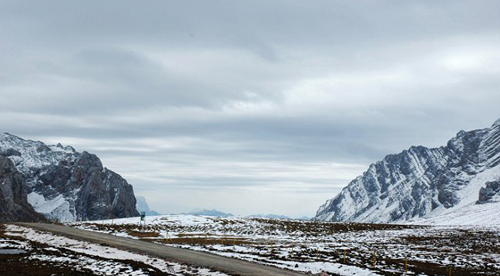Scientests find glacier tracks from 2 mln years ago
Chinese scientists said Thursday they had identified a landform left by glacial erosion at least 2 million years ago on mountains in northwestern Gansu Province.
The erosion, on the southeast edge of the Qinghai-Tibet Plateau and bordering the western provinces of Gansu and Sichuan, started 2 million to 3 million years ago and ended about 20,000 years ago, said Shen Yongping, a researcher with the Cold and Arid Regions Environmental and Engineering Research Institute.
|
 File photo of the Zhagana Mountains in?west China's Gansu Province |
Shen and his colleagues from the Lanzhou-based institute are planning to complete the expedition before the end of this year.
The landform, with an average altitude of 3,500 meters atop the Zhagana Mountains in Diebu County of Gansu Province, was first discovered by filmmakers from a cultural promotion company in Lanzhou in 2007.
Shen said he visited the site last year and saw U-shaped valleys, steep ridges and enlarged hollows. "These are typical landscape features formed by glacial erosion."
During the expedition, Shen and his colleagues would further study its geological structure and environmental evolution.
He said the discovery would provide important data for research on Quaternary glaciers as well as the geography and climate changes in western China.
Glacial erosion refers to the wearing-down and removal of rocks and soil by a glacier. The most extensive period of recent glacial erosion was the Pleistocene era (1.6 million to 10,000 years ago) of the Quaternary period, when the polar icecaps repeatedly advanced and retreated over a period of 2 million to 3 million years.
China has 59,406 square kilometers of glaciers, about 14.5 percent of the world's total. Tibet alone has 28,645 square kilometers of glaciers.
Yet scientists say China's glaciers have shrunk by 5.5 percent, or 3,248 square kilometers in the past 40 years as a result of global warming.
 0
0 






